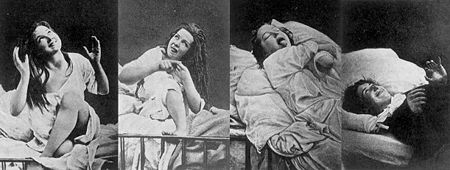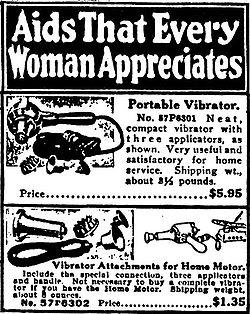Hysteria is a psychological condition that displays uncontrolled outbursts of emotion and behaviors. The term, for the majority of history, more than 4,000 years, was regarded as a sex-selective disorder, affecting only women.
What were some of the outdated theories behind “female” hysteria? There was the uterus theory, which claimed the female sex organ was to be blamed for female problems like anxiety, insomnia, depression, irritability and fainting. There was also Sigmund Freud’s famous ‘Oedipal moment of recognition’ theory, which stated that women experienced hysteria because they were unable to reconcile the loss of their (metaphoric) penis.
With that introduction in mind, I’d like to share with you Hysteria (2011). The film, Official Selection for both Toronto and Tribeca Film Festival, looked at a time in history when female hysteria was a common medical diagnosis, and the prevalence of the condition also led to the creation of vibrators.
It was during the late 19th century and women with the following symptoms—nervousness, insomnia, depression, muscle spasms, and sexual frustrations—were said to suffer from hysteria. The long list of symptoms associated with hysteria meant that if a woman was anything other than docile, obedient and proper, she had hysteria. A popular treatment at the time was a vaginal massage, or “pelvic massage.”
Yes, the massage was exactly what you think it was. The problem with the treatment, although profitable, was that physicians were required to spend over hours performing vaginal massage before their patients could reach “hysterical paroxysm” (or what we now call “orgasm”). These sessions were long and physically exhausting.
The solution came in the 1870s when the electro-mechanical vibrator was invented and implemented for treatment. By the 20th century, portable home-use massagers were sold as women’s health-aids in magazines and mail-order catalogs.
The medical diagnosis of hysteria officially ended in 1952 and hysteria was deleted from the official Diagnostic and Statistical Manual of Mental Disorders in 1980. Women could now embrace the joy of being loud, volatile, mercurial and even argumentative without the fear of being deemed hysterical.
On another more cheerful note, the electric vibrator, now battery-operated, has remained the most popular sex toy in the world. All thanks to, well, hysteria.



My first thought was…oh! interesting.
The history of the vibrator is a good indicator of how the Western world has evolved from a patriarchal society that once undermined the value of women. Given that the official diagnosis of hysteria was only abolished 60 years ago (during the Civil Rights Movement) the West has come a long way in implementing gender equity, however, because of the sudden paradigm shift in the treatment of women, it has also led to another institutionalization of women steeped in our understanding of sex and beauty and there is no greater culprit and prescription than media’s portrayal of women.
On a much lighter note, at least now husbands don’t have to spend hours trying to …you know what. =P Although it does beckon the question, the men back then were probably only fixated on receiving pleasure and the least bit interested in reciprocating it.
Looking on the bright side, with the invention of this little piece of machinery, both men and women are happy and satisfied!